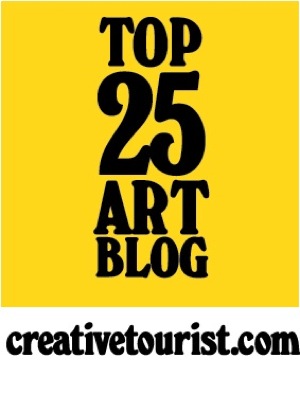[Susan Hiller, Witness 2000. Tate Britain Installation shot
Original commission Artangel © Susan Hiller. Photo: Tate Photography/Sam Drake]
I finally managed to get down to Tate Britain to see
Susan Hiller’s exhibition last weekend, on the final day of the exhibition, and I'm so glad I did. I was intrigued by the sheer variety of work on display, spanning four decades of Hiller's career, but also amongst this selection were some incredible stand-out pieces that I found especially captivating.
Many of the works in this show engage with notions of meaning and memory, including what is lost and forgotten. I found myself especially drawn to those that had an anthropological quality, collecting materials often seen as disposable or ephemeral - from seaside postcards or clips from popular films - and carefully assembling and cataloguing them to give them new status.
Dedicated to the Unknown Artists, for example, is a collection of postcards from British seaside towns, all of which share the same caption: ‘Rough Sea’. Accompanied by meticulous charts and documents mapping their location and information about their finding, they are both beautiful in their own right, immediately evoking windswept, faded seaside towns, and intriguing as a kind of museum collection. The title makes it clear that the work is in part intended as a tribute to the forgotten artists who painted, photographed and hand-tinted these scenes.
Monument is a tribute of a different kind, but once again exploring the idea of lost or forgotten identities. There’s a strangely uncanny feel to this series of photographs of memorial plaques from a neglected Victorian monument to civilian heroes from a London park.
From the Freud Museum, on the other hand, takes this notion of re-investing meaning in a different direction, bringing together a range of apparently unrelated ‘found’ objects in a very personal take on the museum collection. Presented in identical brown cardboard boxes, the ephemera collected takes on a potent quality, becoming a series of mysterious personal mementos, relics and talismans - a system of fragments that point towards an ultimately inaccessible narrative.
There’s a similarly mysterious quality to
The Tao of Water: Homage to Joseph Beuys – a cabinet containing bottles filled with water collected from holy wells and streams around the world. Regardless of the nod to Beuys, there’s something intriguing, beautiful and rather magical about this array of tiny, delicate antique bottles and test tubes, each carefully labelled with the location it was collected, and pointing to a multitude of different sacred sites.
There are a number of film and video works in the exhibition, which exhibit a similar quality of compelling strangeness, such as
Psi Girls (1999), which assembles a series of images taken from films of girls with telekinetic powers in a weirdly mesmeric installation. However, for me it was the final work that had the most overwhelmingly powerful impact.
Witness is an extraordinary installation: a hanging garden of what initially appear to be ethereal silvery tendrils, dangling from the ceiling of a darkened room. On stepping inside this softly glowing space, it becomes clear that these are in fact a host of tiny circular microphones, hanging from silver wires attached to the ceiling. Listening to each microphone reveals a quiet yet matter-of-fact voice, which could be speaking any one of a number of different languages, telling his or her story of an encounter with UFOs or creatures from other spheres. Whether these stories are real or imagined is hardly the point: it’s the experience of listening to these hushed voices in this breathtakingly beautiful science-fiction style space that makes the work powerful.
Full of wonder, strangeness and ultimately, pathos,
Witness was for me the undoubted highlight of an intriguing body of work, which always comes back to the idea of the unknown and inaccessible. Echoing with haunting lost voices and layered with fragments of forgotten things, this exhibition was a poweful experience and one I'm glad not to have missed out on: a thought-provoking and inspiring retrospective.
[Susan Hiller Monument, 1980-1 Image:Tate Britain installation shot
© Susan Hiller. Photo:Tate Photography/Sam Drake]




















